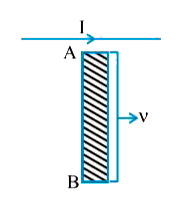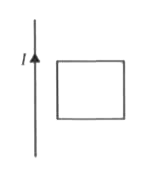The current carrying wire and the rod AB are in the same plane. The rod moves parallel to the wire with a velocity v . Which one of the following statements is true about induced emf in the rod

End A will be at lower potential with respect to B
A and B will be at the same potential
There will be no induced e.m.f. in the rod
Potential at A will be higher than that at B
The correct Answer is:D
By Fleming.s right-hand rule.
Topper's Solved these Questions
- BOOK - ERRORLESSCHAPTER - ELECTROMAGNETIC INDUCTIONEXERCISE - NCERT BASED QUESTIONS (STATIC EMI)39videos
ELECTROMAGNETIC INDUCTION
- BOOK - ERRORLESSCHAPTER - ELECTROMAGNETIC INDUCTIONEXERCISE - NCERT BASED QUESTIONS (APPLICATION OF EMI (Dynamo, Transformer…))20videos
ELECTROMAGNETIC INDUCTION
- BOOK - ERRORLESSCHAPTER - ELECTROMAGNETIC INDUCTIONEXERCISE - ASSERTION & REASON20videos
ELECTROMAGNETIC INDUCTION
- BOOK - ERRORLESSCHAPTER - CURRENT ELECTRICITYEXERCISE - ASSERTION AND REASON26videos
CURRENT ELECTRICITY
- BOOK - ERRORLESSCHAPTER - ELECTRON, PHOTON, PHOTOELECTRIC EFFECT & X -RAYEXERCISE - ASSERTION & REASON27videos
ELECTRON, PHOTON, PHOTOELECTRIC EFFECT & X -RAY
Similar Questions
Wire carrying a study current and rod AB are in the same plane the rod move parallel to wire with velocity v then which end of the rod is at higher potential.
 View Solution
View SolutionA rod of length l is placed perpendicular to a long wire carrying current i. The rod is moved parallel to the wire with a velocity v. Find the emf induced in the rod, if its nearest end is at a distance a from the wire.
 View Solution
View Solution
Knowledge Check
- Question 1 - Select One
A square conducting loop is placed near an infinitely long current carrying wire with one edge parallel to the wire as shown in the figure. If the current in the straight wire is suddenly halved, which of the following statements will be true? ''The loop will..''
 Astay stationaryBmove towards the wireCmove away from the wireDmove parallel to the wire
Astay stationaryBmove towards the wireCmove away from the wireDmove parallel to the wire - Question 2 - Select One
A current-carrying wire got pulled, stretching it and making it thinner in its middle. The cross-section of that wire is shown in the following figure. Which of the following statements about the current and the temperature of the wire is true?
 AThe current and temperature at the thin section of the wire is higher than at the thick sectionBThe current and temperature at the thick section of the wire is higher than at the thin sectionCThe current and temperature at the wire is the same everywhereDThe current in the wire is the same everywhere, but the temperature of the wire is higher in the thin section
AThe current and temperature at the thin section of the wire is higher than at the thick sectionBThe current and temperature at the thick section of the wire is higher than at the thin sectionCThe current and temperature at the wire is the same everywhereDThe current in the wire is the same everywhere, but the temperature of the wire is higher in the thin section - Question 3 - Select One
A copper rod moves parallel to the horizontal direction. The emf. Induced will be maximum at the
AequatorBlatitude 30∘Clatitude 60∘Dpoles
A rod of length l is placed perpendicular to a long wire carrying current i. The rod is moved parallel to the wire with a velocity v. Find the emf induced in the rod, if its nearest end is at a distance ‘a’ from the wire.
View SolutionAn infinite wire carries a current I. An S- shaped conducting rod of two semicircles esch of radius r is placed at an angle θ to the wire. The center of the conductor is at a distance d from the wire. If the rod translates parallel to the wire with a velocity v as shown in Fig. .3.56, calculate the emf induced across the ends Ob of the rod.
 View Solution
View SolutionA square frame with side a and a long straight wire carrying a current i are located in the same plane as m shown in figure. The fram translates to the right with a constant velocity v. Find the emf induced in the frame as a function of distance x.
 View Solution
View SolutionA fixed wire AB carries current I. An electron is moving parallel to the wire, in which direction does the electron tend to move?
View SolutionA fixed wire AB carries current I. An electron is moving parallel to the wire, in which direction does the electron tend to move?
View Solution

